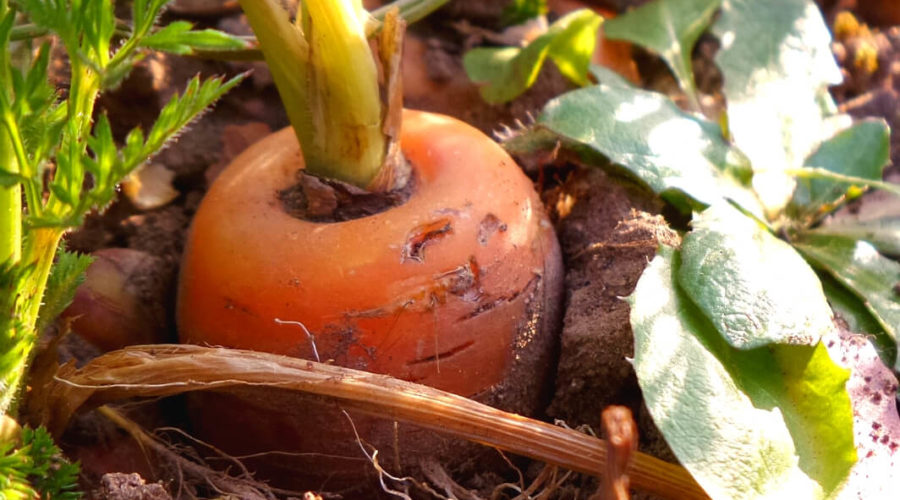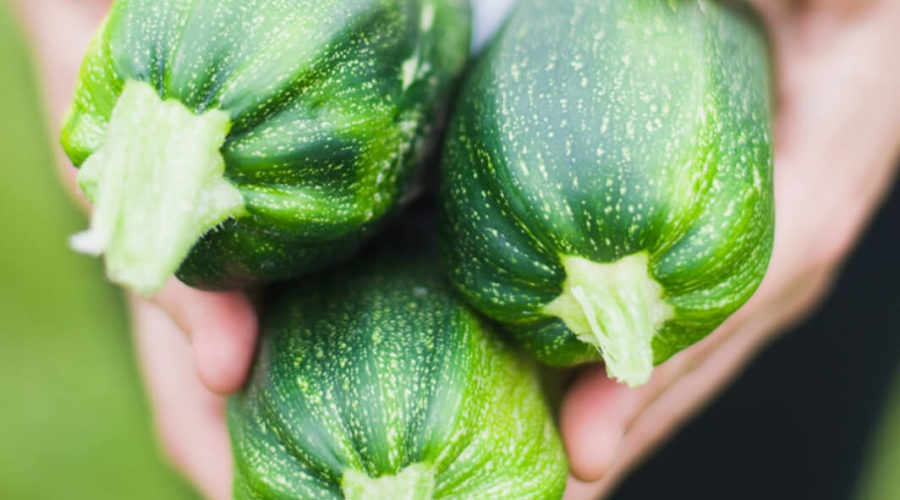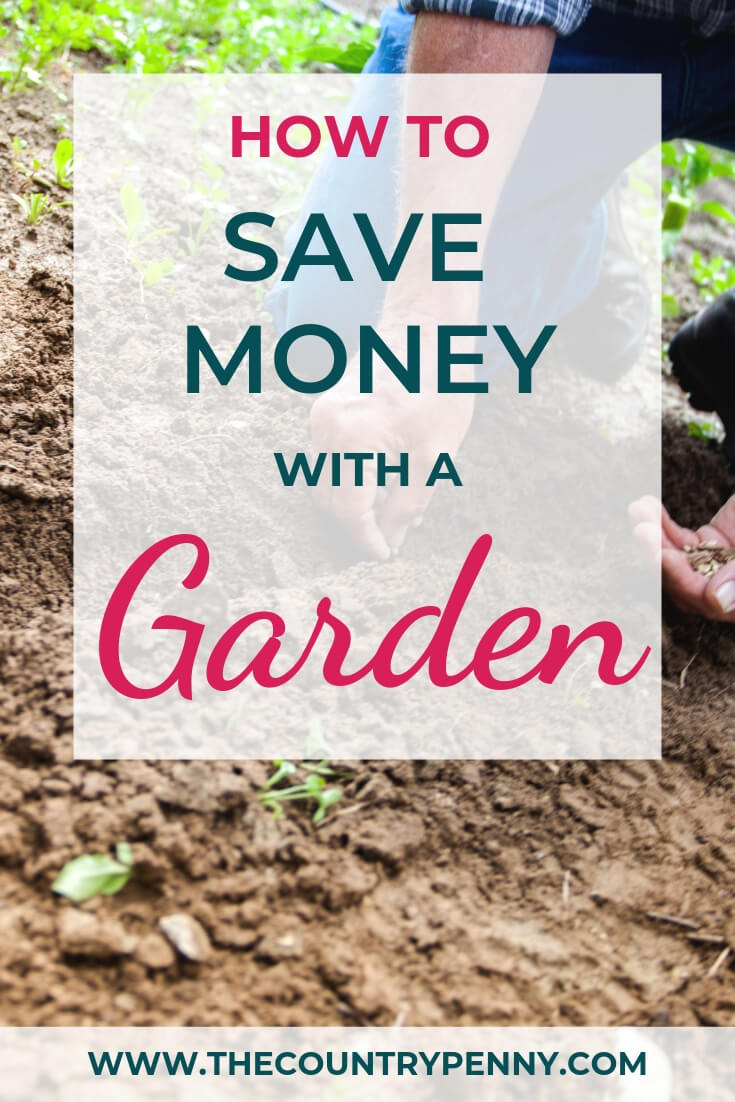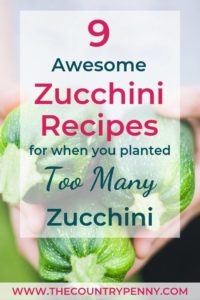Don’t have time to read it now? Pin it for later!
It’s almost spring time!
The snow is finally gone, the meadowlarks are back, and the horses are leaving giant clumps of hair all over everything. With spring right around the corner, it’s time to plan the garden for this year.
My highest priority when I start planning the garden for the year is that it saves us money. It’s really easy to get carried away when you’re flipping through a seed catalog or standing in front of the seed racks at the farm and ranch store. Before you know it, you’ve spent $100 on vegetables that you either don’t like, are inexpensive to buy, or won’t grow where you live!
My garden space is tiny right now. This makes it even more important to make good decisions on what I plant this year. Here’s what I think of when I’m planning my garden to make sure I get the most value for my time and effort.
High Value Crops
While I love to try new things in the garden, I always focus on the vegetables I know will give me the biggest bang for my buck. Peas and broccoli are really cheap to buy in town but bell peppers are always super expensive. Since I can grow bell peppers way cheaper than I can buy them I plant a ton of bell peppers.
When you are trying to save money by growing your own food it is even more important to choose vegetables that are expensive to buy but cheap to grow.
Will it grow where you live?
While it is important to grow high value crops in your garden, that is only true if those crops will actually grow where you live. For example, avocados are really expensive in the store. If you live in southern California it absolutely makes sense for you to grow an avocado tree. But, here in the high desert where we regularly get well below freezing and a few feet of snow, I would have to spend a ton of money on a 100 foot tall greenhouse to grow an avocado tree.
It sounds really silly when you really think about it, but I’ve talked to people who are so set on growing everything they eat that they want to spend thousands of dollars on a greenhouse to grow 20$ worth of produce. It’s silly to spend lots of money to try to grow a plant that doesn’t fit your climate.
Cherries and apples grow amazingly here, so we’ll grow them instead.
Grow perennials
One of the most cost effective ways to garden is by growing perennial plants. These are plants that will come back year after year. When most people think of perennials they think of berries and fruit trees but you can also plant asparagus, garlic, most herbs, and lots of other fruits and vegetables.
Perennials are a great way to increase the value of the produce from your garden because you purchase them once and then harvest food from them for years. Also a lot of perennials are really easy to take care of.
Garlic is basically a weed in my flower beds. I do nothing for it. I dig up and harvest a bunch in the fall, and the next spring more grows. It’s pretty much free food at this point.

Will you eat it?
There is no point in growing foods that your family won’t eat, even if it’s a food you’re “supposed to” grow. A lot of people plant tons of carrots. My family will eat some fresh but we don’t eat a lot of frozen or canned carrots.
So I’m not planning on growing a ton of carrots, even though every garden planting guide ever says you need lots. I’m planting a small row for eating fresh but that’s all.
Also, stop and think about the ingredients you cook with all the time. One of the ingredients I use a lot are bell peppers. I use them in stir fry, breakfast burritos, and fajitas to name just a few. Bell peppers freeze really well, so I grow a ton of bell peppers, slice them and freeze them. Since it is something I use all the time, it is completely worth the effort of growing and freezing them.
How hard is it to store?
I like to grow foods that don’t require a lot of work to preserve. I do still can and freeze a lot of foods but I really love having foods that I can pick and then put on the shelf for the winter.
Potatoes, onions, winter squash, spaghetti squash, garlic, and pumpkins are incredibly easy to store. In the fall when I’m overwhelmed with all of the other canning and preserving, all I have to do is pick them or dig them up and dry them off. Then I store them in a cool dark place where they will keep for most, if not all, winter.

How much do you need?
I also like to grow plants that will produce a ton of food on a single plant, like zucchini. One or two zucchini plants will produce more zucchini than most people know what to do with.
There’s a local joke that the reason people lock their car doors at church is not to prevent their car from being stolen. They lock the door to prevent people from filling their car with all of their extra zucchini they can’t give away.
While it’s great to get a lot of food from one plant, it’s also really important to not plant way more than you need. Never ever ever plant more than two zucchini plants. If you do, you will never find your way out of the giant mountain of zucchini. Your friends will start running when they see you coming because you have been forcing them to take extra zucchini for the last three weeks. If you value your sanity never plant more than two zucchini plants.
It sounds like common sense, but so many people think they need to plant ridiculous amounts of food. If you will only eat a little bit of corn, there’s no reason for you to plant an acre. Most of it will get wasted and you will spend a ton of time and money planting, weeding, and harvesting food that won’t actually get eaten.
When you are trying to save money by growing a garden it’s really frustrating when it costs more than buying food at the grocery store.
When you focus on growing high value crops that do well in your climate and are easy to store, foods that your family uses all the time, and plant a reasonable amount you can grow a garden that saves money instead of costing money. Growing tons of extra food doesn’t save you money and it costs you extra time and effort. Simplify.




